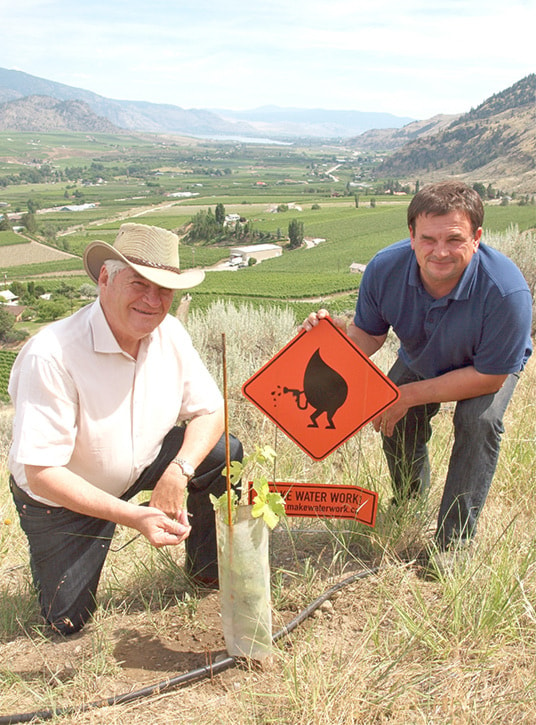It’s a long-term experiment in dryland farming, but if successful, it could prove to be a harbinger of the future in the arid Okanagan, and at the same time, some spectacular flavours may result.
At the helm is Canadian wine industry pioneer Don Triggs, a founder of industry giant Vincor who left when it was sold to Constellation Brands in 2006, leaving behind his name on the Jackson-Triggs line of wines.
The Triggs opened Culmina Family Estate Winery last year on dry benchland between Oliver and Osoyoos, after meticulous work that included soil testing, water capacity analysis and detailed climate and topographical studies on the property.
The result: a 56-acre vineyard planted with a complex irrigation system managed by micro-blocks that are an average half-acre in size, controlled by 108 valves. Soil probes provide data from every 20 centimetres at five different soil depths to determine increases and decreases in the water in the soil. This data is compared daily to the previous year and is the basis — along with weather forecasts — for irrigation decisions, although the system itself is completely computerized.
“With these measurements we can apply only what each micro-block needs. That saves water and produces healthier plants,” said Triggs.
“We’re in the vineyard every day and can computer control not only the water that goes on, but can set each valve precisely, depending on soil type and need,” he explained. “There’s 100 per cent variation in water holding capacity on this site, so if we watered all the vines the same, we wouldn’t achieve what we want to.”
They also imported the first Berthoud sprayer from France that uses a quarter of the water of a conventional sprayer.
The maxi-jet, under-canopy irrigation system ensures evaporation is minimized and only some rows are cultivated to ensure less competition for water, depending on the vigour of the vines in each spot.
The big experiment, though, is last summer’s planting of 1,200 bush vines – 400 each of syrah, cabernet franc and cabernet sauvignon with just a drip irrigation line to direct water to each vine— wasting none on the native sagebrush, bunchgrass and mariposa lilies which have been left between the vines.
They will be watered for just two years to help push the roots deeper for water, and then irrigation will be withdrawn, leaving the goblet-pruned vines to survive with just natural precipitation on this hot, dry bench overlooking the Okanagan River far below.
It’s very steep, so no machines will ever touch this dryland part of the farm, and it’s a spot that couldn’t be farmed under normal circumstances, notes Triggs.
If the experiment works, he believes the resulting flavours in the grapes and wine could be exceptional, even though the vines will be lower yield than the trellised vines surrounding them. If successful, some of the dryland farming techniques used here could be adapted elsewhere in the vineyard, but it will be at least five years before they know and it’s a 10-year experiment.
“It’s vital to conserve water in this valley,” said Triggs, and not just in business or agriculture he adds. “It’s important to understand what we’re using, so we must monitor both farm and household usage.”
With 24 per cent of all Okanagan water used on household lawns and gardens, and less water available per person than anywhere in Canada, valley residents are encouraged to reduce outdoor water use this summer. Take the pledge to Make Water Work at www.MakeWaterWork.ca and enter to win $5,000 in WaterWise yard upgrades.
Take the pledge to:
• Water plants. Not pavement.
• Water between dusk and dawn.
• Leave lawn 5-8 cm (2-3 inches) tall
• Leave grass clippings as mulch
• Top dress with compost; and
• Change out some lawn for drought-tolerant turf and/or native and
low-water variety plants.
Make Water Work is an initiative of the Okanagan Basin Water Board and its Okanagan WaterWise program.
